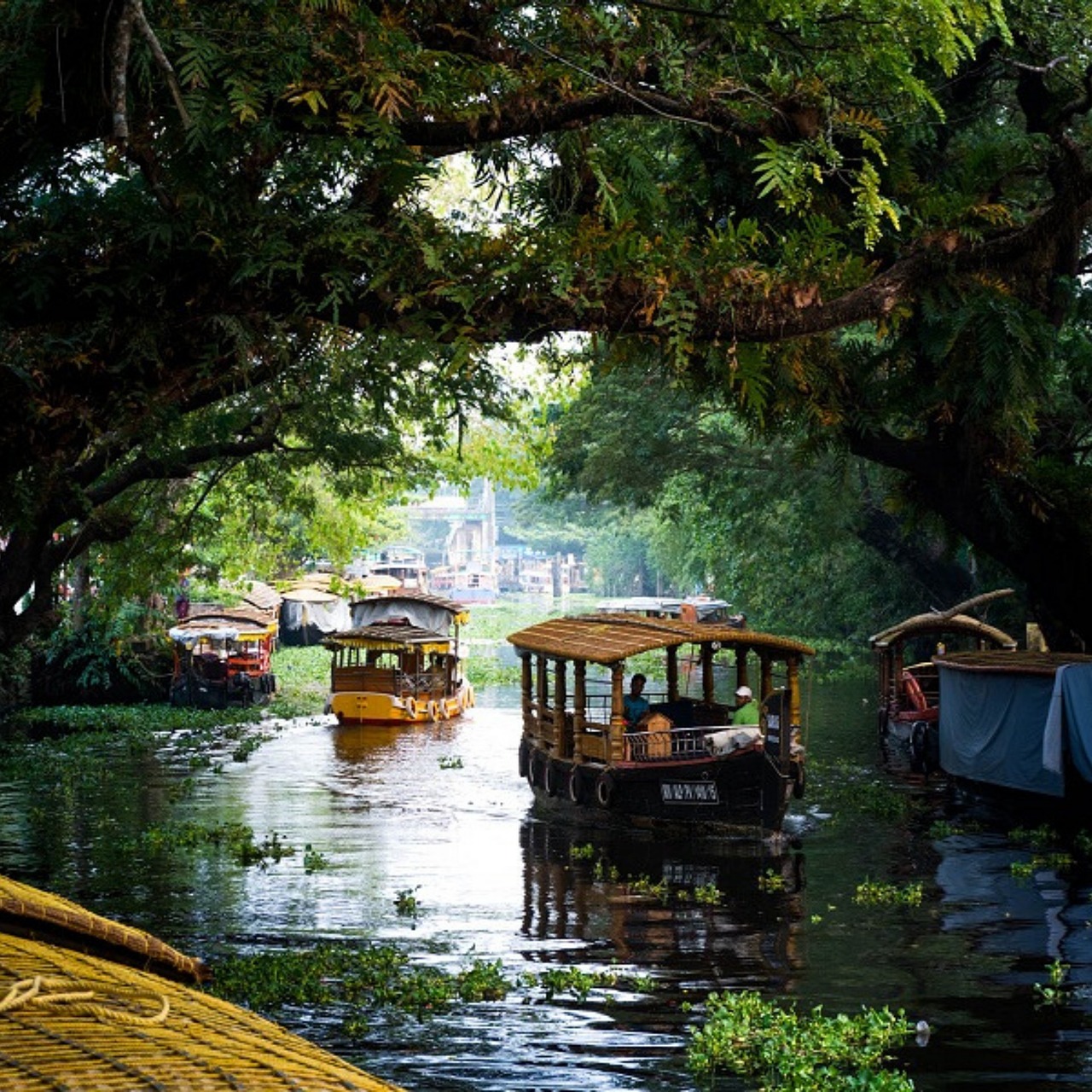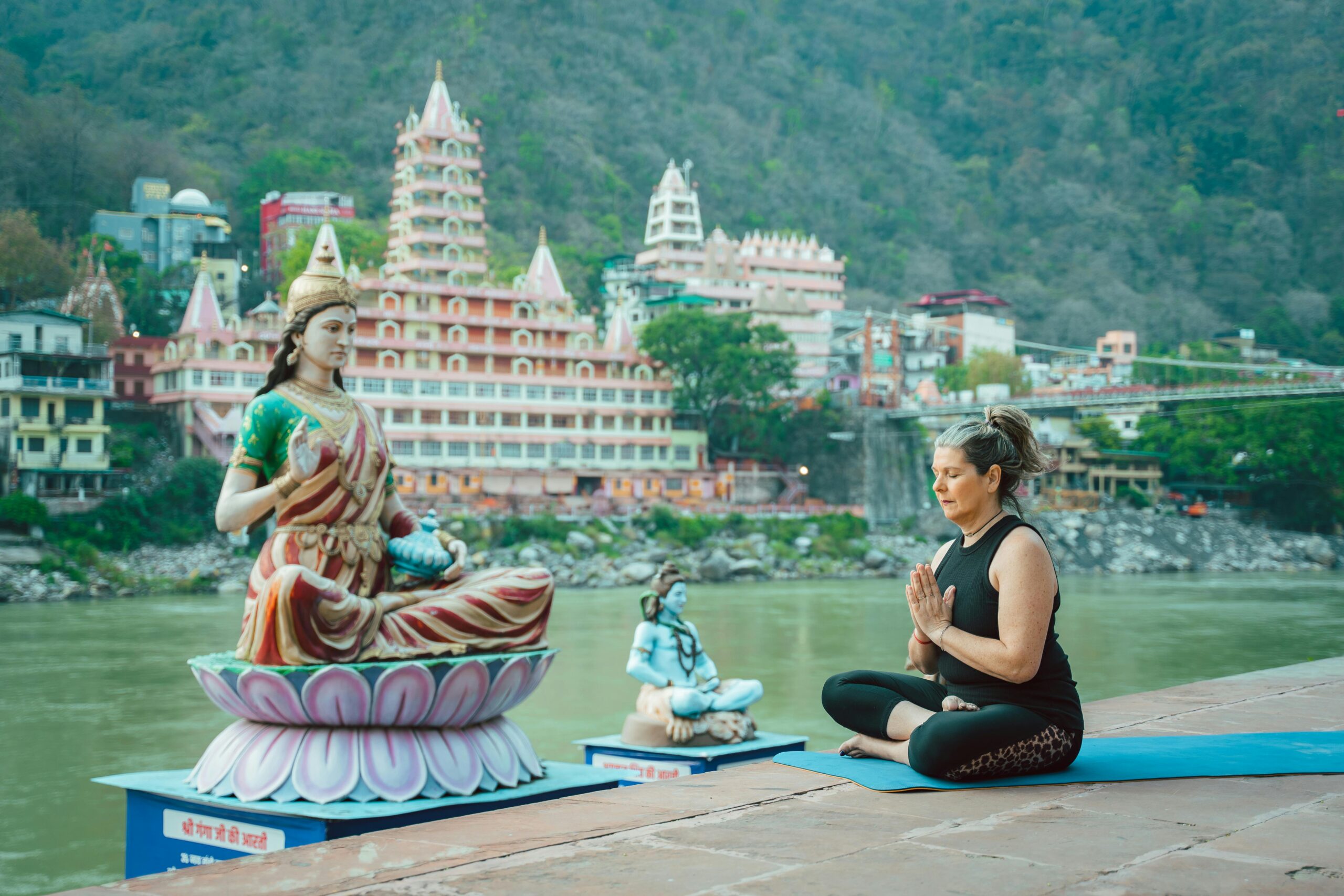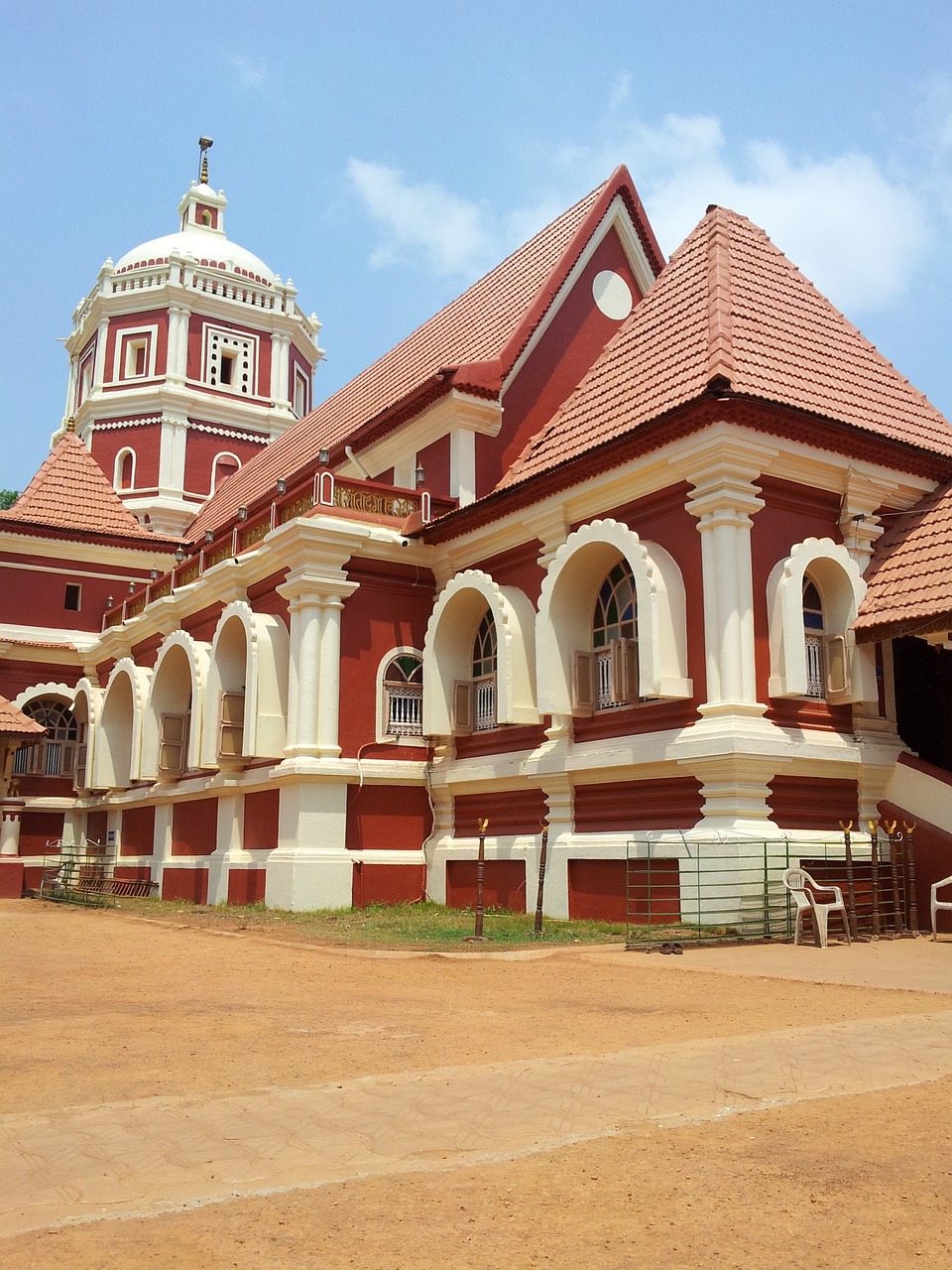Welcome to Your Ultimate Guide for Travel in India
Travel in India offers an unparalleled experience, rich in diversity and vibrant culture, making it one of the most sought-after destinations for travelers worldwide. With its vast landscapes, from the majestic Himalayas in the north to the serene beaches of the south, India invites exploration at every turn. The country’s intricate tapestry of history is woven through its ancient temples, grand palaces, and bustling markets, where every street corner tells a story waiting to be discovered. Travelers can immerse themselves in the spiritual heart of India by visiting revered sites like Varanasi, where the sacred Ganges flows, or exploring the tranquil landscapes of Kerala, known for its backwaters and lush greenery. The cuisine is another highlight of travel in India; each region boasts its unique flavors, spices, and culinary traditions that tantalize the palate. From the rich, creamy dishes of the north to the fiery, coconut-infused recipes of the south, food lovers will find themselves on a delightful journey through the country’s gastronomic heritage.
Moreover, travel in India is not complete without experiencing its colorful festivals that celebrate the country’s cultural richness. Events like Diwali, Holi, and Eid bring communities together in a spectacular display of lights, colors, and traditions, allowing visitors to participate and engage with locals, creating unforgettable memories. The warmth and hospitality of the Indian people enhance the travel experience, as they welcome guests with open arms, eager to share their customs and stories. Eco-tourism is also gaining momentum, with numerous initiatives promoting sustainable travel, particularly in regions like Uttarakhand and Himachal Pradesh, where travelers can enjoy breathtaking natural beauty while supporting local communities.
Adventure seekers will find plenty to indulge in, from trekking in the Himalayas to experiencing thrilling water sports in Goa. Wildlife enthusiasts can embark on safaris in renowned national parks like Ranthambore and Jim Corbett, where they might catch a glimpse of majestic tigers in their natural habitat. Traveling through India is a sensory overload—each moment is filled with stunning visuals, enchanting sounds, and aromatic scents. Whether you seek solace in the serene landscapes, the thrill of exploration, or the joy of cultural immersion, travel in India promises a kaleidoscope of experiences that will linger in your heart long after you depart. Every journey through this incredible nation is a step into a world of contrast and beauty, beckoning adventurers, culture enthusiasts, and food lovers alike.
Why Travel to India?
Traveling to India is an enriching experience that immerses visitors in a vibrant tapestry of culture, history, and diversity. This vast subcontinent, with its kaleidoscopic landscapes, offers everything from the serene backwaters of Kerala to the majestic peaks of the Himalayas. As you traverse its varied terrain, you’ll encounter bustling cities, tranquil villages, and ancient temples that echo with stories from centuries past. The aroma of spices fills the air, inviting you to savor the exquisite flavors of Indian cuisine, which varies remarkably from region to region, each dish a reflection of local traditions and ingredients. The warmth of Indian hospitality is unparalleled; locals often welcome travelers with open arms, eager to share their customs and way of life. Festivals burst forth with color and joy, celebrating everything from harvests to religious beliefs, allowing visitors to witness the fervor and passion that characterize Indian culture. Rich in spirituality, India is home to sacred sites and pilgrimage routes that attract seekers from around the globe, offering a chance for reflection and connection. Additionally, the country’s diverse wildlife, from tigers prowling in national parks to elephants wandering in the wild, presents unique opportunities for nature lovers. Whether exploring the architectural marvels of the Taj Mahal or navigating the bustling streets of Delhi, every moment in India becomes a cherished memory. The intertwining of ancient traditions with modernity creates a dynamic atmosphere that leaves travelers with a profound sense of awe and a desire to return, making India not just a destination, but a journey of discovery.
India is a country steeped in history, spirituality, and diversity. From the snow-capped peaks of the Himalayas to the golden sands of the Thar Desert, every corner has a story to tell. Rich traditions and modern lifestyles coalesce in urban centers, providing travelers with a unique cultural tapestry to unravel. Here are some must-visit destinations that showcase the best of what India has to offer:

Kerala: God's Own Country
Kerala, known as “God’s Own Country,” is one of India’s most popular tourist destinations, attracting visitors with its unique blend of natural beauty, cultural heritage, and tranquility. The state is famous for its lush green landscapes, backwaters, and serene beaches like Kovalam and Varkala. The backwaters of Alappuzha and Kumarakom offer houseboat cruises, giving travelers a peaceful experience amidst coconut groves and traditional village life.Kerala is also home to the Western Ghats, which house wildlife sanctuaries like Periyar and hill stations like Munnar, known for tea plantations and trekking opportunities. The rich cultural traditions, including classical dance forms like Kathakali and Mohiniyattam, and ancient Ayurvedic practices, add to the state’s appeal.Tourism in Kerala is supported by well-developed infrastructure, eco-friendly initiatives, and a focus on sustainable practices. The monsoon season has even given rise to “monsoon tourism,” attracting visitors looking to experience rejuvenating Ayurvedic treatments. Kerala’s festivals, such as Onam, provide a colorful insight into its traditions. With its diverse offerings, Kerala has become a top destination for both domestic and international tourists seeking relaxation, adventure, and cultural immersion.

Varanasi: The Spiritual Heart of India
Varanasi, often referred to as the Spiritual Heart of India, is one of the world’s oldest continuously inhabited cities, located along the sacred Ganges River. This ancient city, also known as Kashi or Benares, holds immense significance for Hindus and attracts pilgrims from across the globe. It is believed that dying in Varanasi grants moksha, or liberation from the cycle of birth and death.
The ghats (stone steps leading to the river) are the heart of Varanasi’s spiritual life. From the early morning rituals of bathing in the Ganges to the mesmerizing Ganga Aarti at sunset, these ghats are alive with vibrant religious practices. The city’s narrow lanes are filled with temples, the most famous being the Kashi Vishwanath Temple, dedicated to Lord Shiva.
Varanasi is also a hub of culture and learning, home to the prestigious Banaras Hindu University. Its rich traditions in music, literature, and arts add to its spiritual aura. The city embodies the essence of India’s ancient traditions, offering a unique blend of devotion, culture, and history. For many, a visit to Varanasi is not just a journey, but a deeply transformative experience.

Rishikesh: The Yoga Capital
Rishikesh, often referred to as the Yoga Capital of the World, is a serene town nestled in the foothills of the Himalayas in northern India. Famous for its spiritual ambiance, it draws seekers from around the globe who come to learn and practice yoga and meditation. The town’s calm environment, coupled with the flowing Ganges River, provides an ideal setting for reflection and rejuvenation.
Rishikesh is home to numerous ashrams and yoga centers, offering teachings rooted in ancient Indian traditions. Many of these ashrams host international yoga festivals, attracting both beginners and seasoned practitioners. The town’s significance is further enriched by its connection to Hindu mythology, as it is believed that Lord Rama performed penance here after his battle with the demon king Ravana.
In addition to yoga, Rishikesh is known for its adventure activities like white-water rafting and trekking, making it a versatile destination for both spiritual seekers and thrill-seekers. The iconic Laxman Jhula and Ram Jhula suspension bridges are major landmarks, offering picturesque views of the river and surrounding landscapes. Overall, Rishikesh serves as a perfect blend of spirituality, nature, and adventure

Mumbai: The City That Never Sleeps
Mumbai, often referred to as the city that never sleeps, is a pulsating metropolis where life moves at an extraordinary pace. As the financial capital of India, Mumbai thrives on its dynamic economy, powered by industries like Bollywood, finance, and real estate. This bustling city is a melting pot of diverse cultures, languages, and traditions, making it a cultural epicenter. From the historic Gateway of India to the vibrant Marine Drive, Mumbai offers a perfect blend of old-world charm and modernity.
What truly sets Mumbai apart is its unmatched resilience. The city has survived floods, attacks, and economic crises, yet it continues to thrive with an indomitable spirit. Its nightlife is legendary, with restaurants, clubs, and street food stalls operating well into the early hours. The famous local trains serve as the city’s lifeline, connecting millions of commuters daily. Whether it’s the bustling markets of Colaba or the serenity of Juhu Beach, Mumbai offers an endless array of experiences.
In Mumbai, there’s a sense of unwavering ambition and hope. It’s a city that dreams big, constantly moving forward, yet always embracing its deep-rooted heritage—truly, a city that never sleeps.

Goa: The Beach Paradise
Goa, often hailed as India’s beach paradise, is a tropical haven known for its golden sands, crystal-clear waters, and vibrant culture. Located along the Konkan coast, Goa boasts some of the most stunning beaches in the world, from the lively shores of Baga and Calangute to the serene beauty of Palolem and Anjuna. These sun-kissed beaches are perfect for relaxation, adventure sports, and enjoying the stunning sunsets.
Beyond its beaches, Goa offers a rich blend of Portuguese heritage and Indian traditions, reflected in its architecture, cuisine, and festivals. The region is dotted with colonial churches, such as the iconic Basilica of Bom Jesus, and vibrant local markets, like the flea markets of Arpora and Mapusa. Its unique cuisine, a mix of Indian spices and Portuguese flavors, is famous for its seafood delicacies and feni, a local spirit.
Goa’s laid-back atmosphere, coupled with its thriving nightlife, makes it a favorite destination for both domestic and international tourists. From water sports to tranquil backwater cruises, Goa offers something for everyone. It’s a place where nature meets culture, making it truly deserving of the title—the beach paradise.

Leh-Ladakh: The Land of High Passes
Leh-Ladakh, often called the Land of High Passes, is a breathtaking region located in the northernmost part of India. Nestled between the Karakoram and Himalayan mountain ranges, it is known for its rugged landscapes, stunning monasteries, and unique culture. The region’s high-altitude terrain, with its vast deserts, towering peaks, and crystal-clear lakes, makes it a paradise for adventure enthusiasts and nature lovers.
The town of Leh serves as the gateway to Ladakh and is renowned for its historical significance and vibrant Buddhist culture. Iconic landmarks like the Leh Palace, Shanti Stupa, and Thiksey Monastery offer a glimpse into the region’s rich heritage. The annual Hemis Festival is a major cultural event, celebrating Ladakh’s spiritual traditions with colorful dances and rituals.
Adventure seekers flock to Ladakh for activities like trekking, mountain biking, and river rafting on the Zanskar River. The mesmerizing Pangong Lake and Nubra Valley are must-visit spots, showcasing Ladakh’s surreal beauty. With its remote location and pristine environment, Leh-Ladakh provides an unparalleled escape into the heart of nature, offering peace, adventure, and spiritual solace all at once.

Agra: The City of the Taj Mahal
Agra, famously known as the City of the Taj Mahal, is one of India’s most iconic destinations. Located in the northern state of Uttar Pradesh, it is home to the magnificent Taj Mahal, a symbol of eternal love and one of the Seven Wonders of the World. Built by Mughal Emperor Shah Jahan in memory of his beloved wife Mumtaz Mahal, the Taj Mahal’s stunning white marble structure, intricate carvings, and symmetrical gardens attract millions of visitors each year.
Apart from the Taj Mahal, Agra boasts several other historic monuments that reflect its rich Mughal heritage. The Agra Fort, a UNESCO World Heritage site, showcases impressive architecture and offers a glimpse into the royal life of the Mughal emperors. Another remarkable site is the Itimad-ud-Daulah’s Tomb, often referred to as the “Baby Taj” for its exquisite design.
Agra is also famous for its bustling markets, where visitors can shop for handicrafts, leather goods, and locally made artifacts. The city’s Mughlai cuisine is another highlight, offering dishes rich in flavor and history. Overall, Agra stands as a vibrant blend of historical grandeur, cultural richness, and timeless beauty.

Jaipur: The Pink City
Jaipur, famously known as The Pink City, is a majestic blend of rich history, vibrant culture, and architectural splendor. As the capital of Rajasthan, Jaipur stands out for its distinctive pink-colored buildings, which were painted in honor of a royal visit by Prince Albert in 1876. The city is a living testament to India’s royal heritage, with grand palaces, forts, and temples that capture the essence of Rajputana architecture.
One of the city’s most iconic landmarks is the Hawa Mahal, or Palace of Winds, with its intricate lattice windows that allow cool breezes to flow through. The Amber Fort, perched on a hilltop, offers panoramic views of the surrounding landscape and is a symbol of Jaipur’s royal legacy. The City Palace, with its sprawling courtyards and museums, provides a glimpse into the lavish lifestyle of the erstwhile Maharajas.
Jaipur is also a hub for traditional arts and crafts, particularly gemstone jewelry, textiles, and blue pottery. The bustling bazaars of Johari Bazaar and Bapu Bazaar are a shopper’s delight. Combining royal charm with modern attractions, Jaipur, The Pink City, stands as a shining example of India’s rich cultural tapestry and timeless beauty.
Travel Tips for India
1. Plan Your Itinerary:
- Research: India is vast and diverse, so research the regions you want to visit—North for Himalayan mountains, South for tropical beaches, West for deserts, and East for tribal culture
- Prioritize: You likely won’t see all of India in one trip. Prioritize key cities or landmarks such as the Taj Mahal (Agra), Jaipur, Kerala backwaters, Goa beaches, or the vibrant streets of Mumbai or Delhi.
- Travel Time: Factor in travel times as distances between cities can be long. Domestic flights or trains are ideal for covering large distances.
- Weather: India’s climate varies dramatically—October to March is generally the best time to visit, but some regions like Ladakh or the Himalayas are best visited in summer (June-August).
2. Respect Local Customs:
- Clothing: Dress modestly, especially when visiting temples or religious sites. In general, women should cover their shoulders and knees, and men should avoid going shirtless in public spaces.
- Footwear: You’ll often be required to remove your shoes before entering temples, mosques, or some homes. Sandals are practical for easy removal.
- Greetings: A respectful way to greet is with a slight bow and a “Namaste” (palms together). Avoid physical contact with the opposite gender, especially in conservative areas.
- Religious Sensitivities: Always ask for permission before taking photos at religious sites and avoid discussing sensitive political or religious topics with locals.
3.Try Local Cuisine:
- Variety: Indian cuisine is diverse—each region offers unique flavors. Don’t miss street food like chaat in Delhi, dosas in South India, fish curry in Goa, or biryani in Hyderabad.
- Spices: Indian food can be spicy, so if you prefer less heat, ask for your food to be made “mild” or “with less spice.” Also, opt for yogurt (curd) or lassi to cool down your palate.
- Safety: To avoid stomach issues, choose reputable restaurants and avoid street food that may not look freshly prepared. Always peel fruits and drink bottled water.
4. Stay Hydrated:
- Water Safety: Tap water isn’t safe to drink in most parts of India. Stick to bottled or filtered water. Ensure the seal is intact when buying bottled water.
- Electrolytes: Carry rehydration salts or electrolyte packets, especially if traveling during the hot season or in humid areas.
- Fresh Juice: Avoid fresh juices from street vendors unless you’re sure it’s made with purified water. Opt for packaged juices to stay safe.
Start Your Journey Today!
Embark on a journey of discovery and create unforgettable memories. The rich tapestry of India awaits you, ready to offer experiences that will last a lifetime. Dive into the cultural richness and scenic beauty as you plan your next adventure. Travel in India is not just a journey; it’s a life-changing experience.